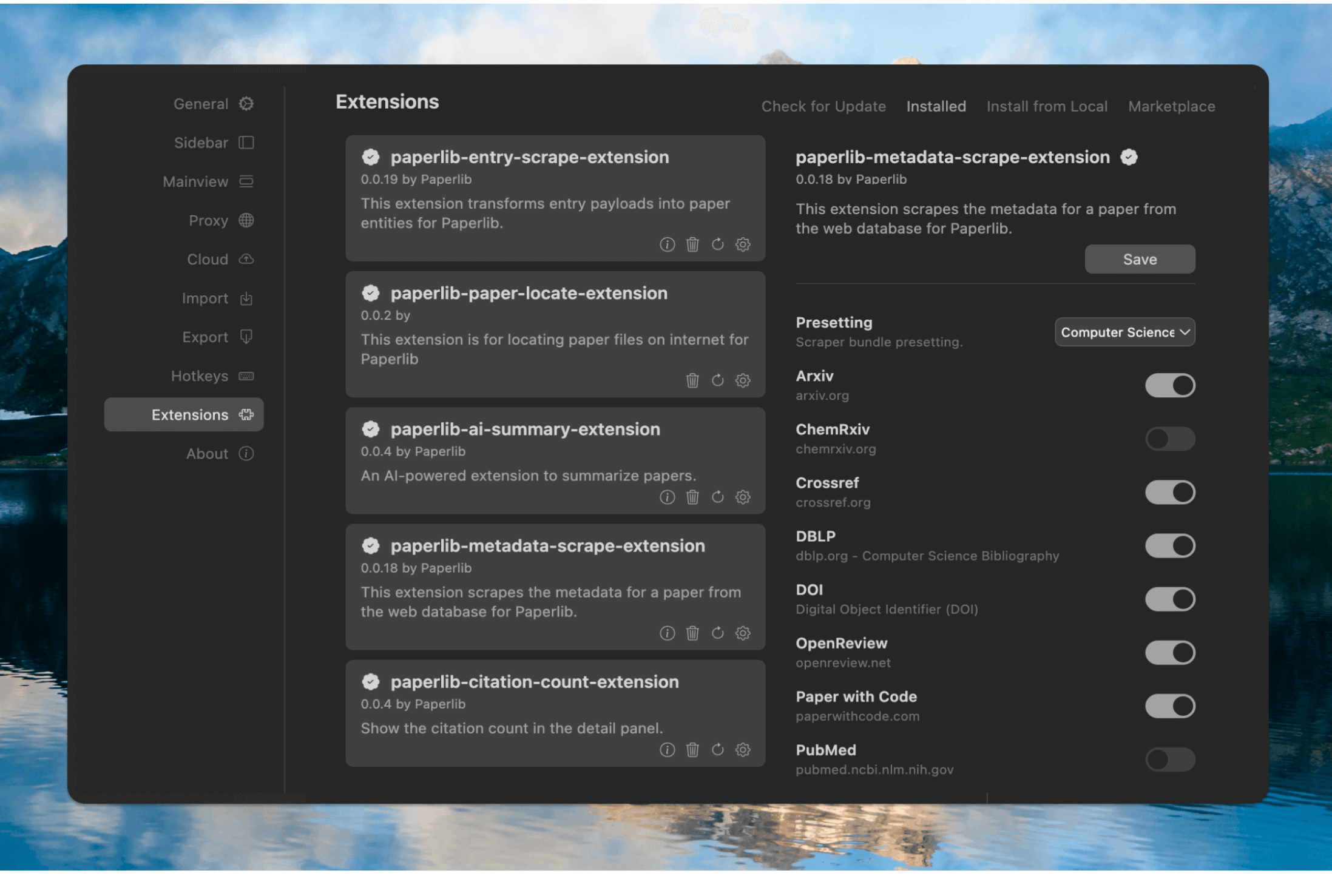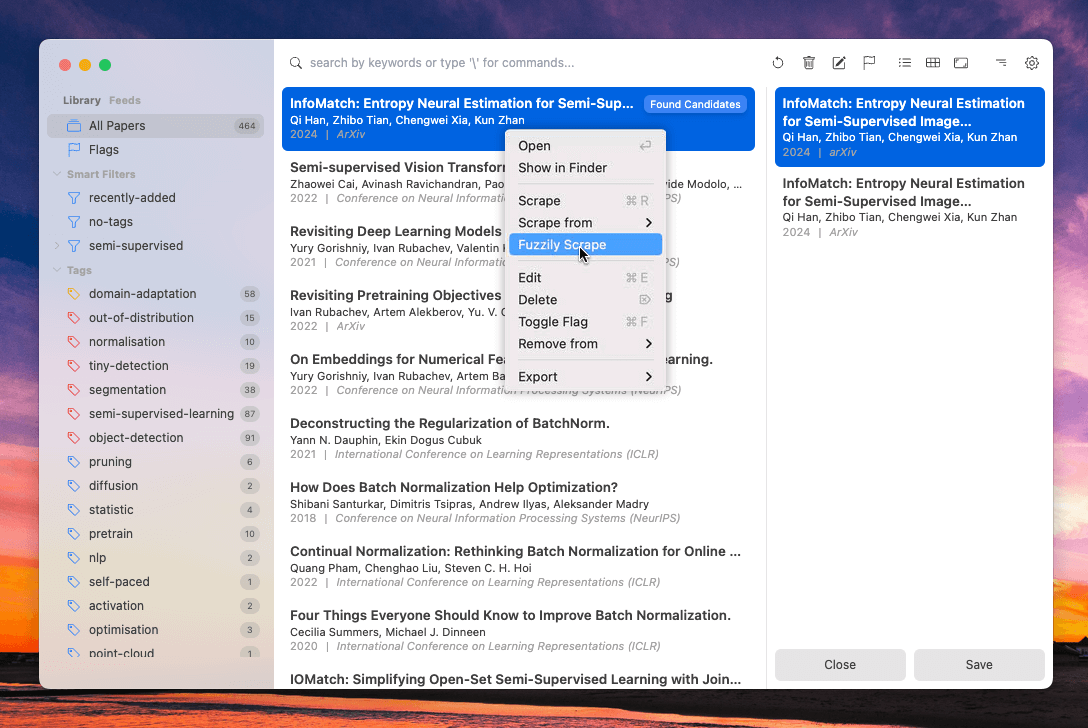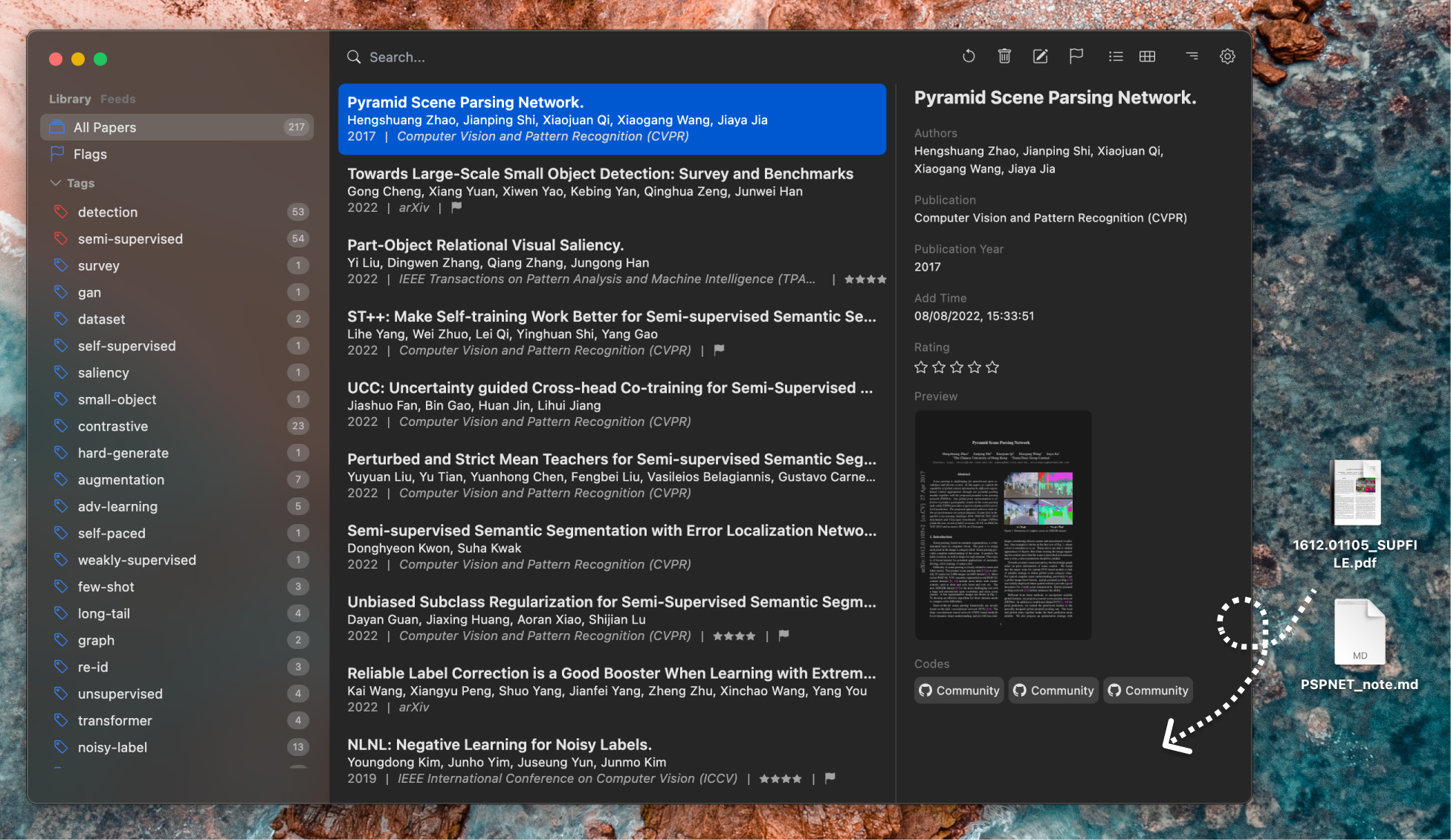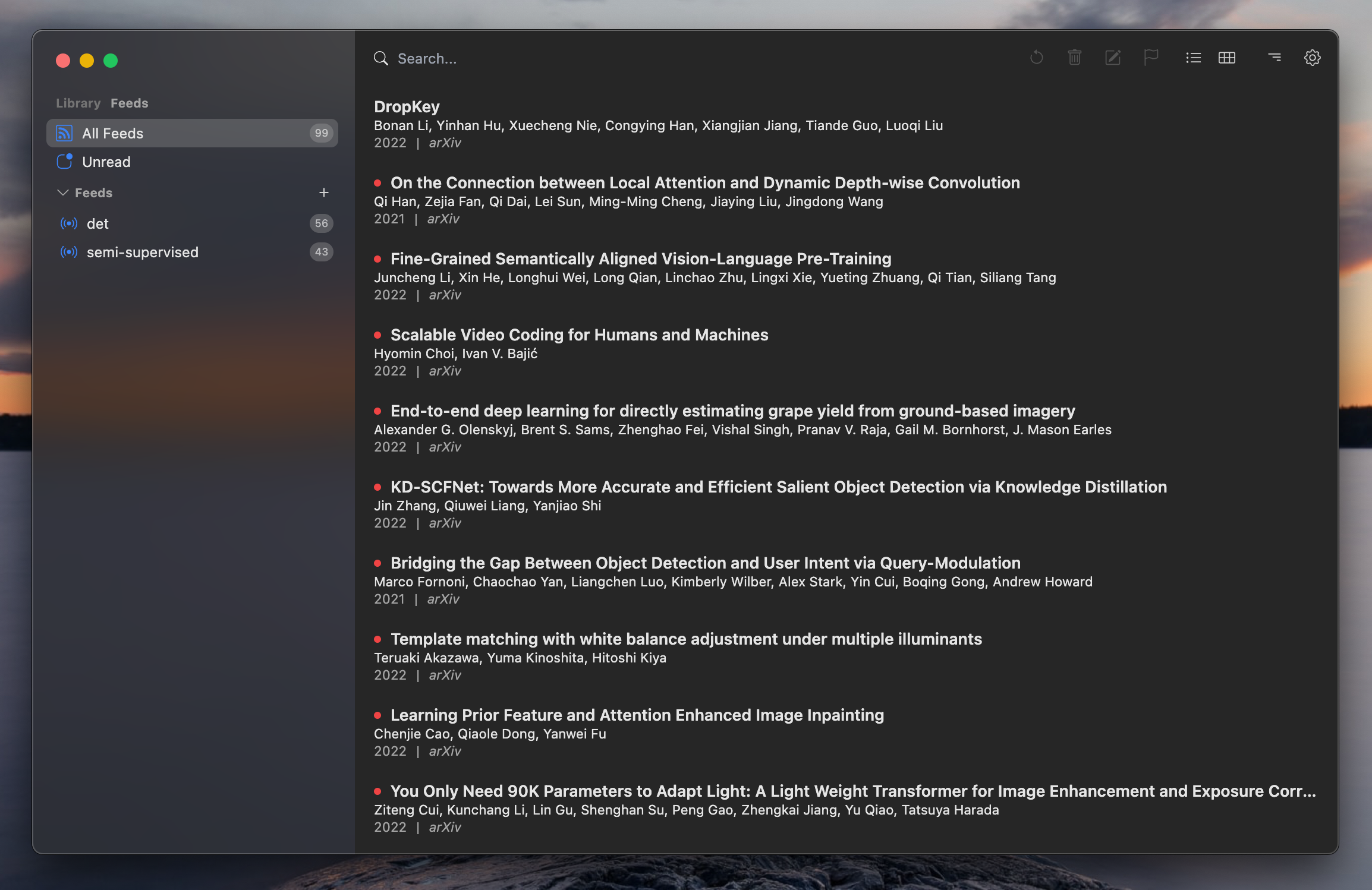Getting Started
This article introduces how to use Paperlib.
Library Folder
Open the preference window, choose a folder to store all your paper PDF files and the local database files.
⚠️ If you are going to use the cloud sync feature, we recommend you to choose a shared folder such as Onedrive, Dropbox etc.
⚠️ If you use WebDAV to sync your library, this folder is used as the cache folder.

Metadata Scrapers
We build a data pipeline to scrape the metadata from many databases for each paper. We achieve this via an extension paperlib-metadata-scrape-extension. You can select your preferred scrapers in the preference window.
⚠️ Please choose a proper scraper combination for the best retrieval rate.

Import New Papers
Drag and drop PDF files onto the main view of Paperlib. You can also import a paper from a website by clicking the browser extension.
The .bib file and the .csv file exported from Zotero are also supported.

Metadata Retrieval
The metadata of each imported paper will be automaticlly scraped. Some papers may match nothing in the databases, thereby resulting in an empty/wrong paper item. You can manually edit its metadata by pressing CTRL/CMD + E or by clicking the edit button. Providing one of the title / DOI / arxivID and click the Scrape button to complete the rest is enough for most cases.
In addition, you can use the fuzzy scraping feature to find multiple possible matches.

Open / Preview a Paper
- Open a paper: double click an item in the main view.
- Preview a paper: press
Spaceor switch to the Table and Reader view. - For Windows / Linux users, please install the
paperlib-preview-extensionfrom our extension marketplace.

Tags / Folders
- Add: open the edit view, add or create your preferred tags. You can also drag-drop an item to a tag/folder in the sidebar to add it to the tag/folder. In the left sidebar, you can also create a new tag or folder by clicking the
+button. - Colorize: right click a tag or a folder in the sidebar list can change its color.
By default, the
tagis the inherent attributes of a paper such ascomputer-vision. Thefolderindicates the attributes given by users such asgood-writing. But you can use them in any way you like. In Paperlib 3.0, we provide hierarchical folders.

Attach Supplementary Files
Drag and drop some files onto the detail view (right panel) of a paper to attach supplementaries.

Locate Available PDF
For a paper without a PDF file, click the button called 'Locate' in the details panel to download the PDF file from internet. Please install the paperlib-paper-locate-extension to use it.
Paperlib provides some PDF downloaders such as arXiv, Unpaywall etc.. For xxx-hub (that very famous paper download website XD), we cannot directly provide it because of the legal issue. You can manually input the URL of it in the preference - downloader to use it.

Search
Paperlib provides three search modes: general, fulltext, and advanced mode. You can use \search, \search_fulltext, and \search_advanced in the command bar to switch between them.
Quick Copy-paste Plugin
When you are writing a paper, you can use the Quick Copy-paste Plugin to copy-paste the BibTex of a paper in your library. Just press CTRL/CMD+SHIFT+I, search a paper, and press Enter. Now, the BibTex is copied to your clipboard. You can also link this plugin to a folder. All papers copied by this plugin will be added to that folder. Thus, you can export all the BibTex once you finish writing your draft paper.

See Quick Copy-paste Plugin for more details.
Subscribe to RSS Feeds
You can subscribe to RSS feeds to get the latest papers in your research topic. To add a new RSS feed, switch to the Feeds view and click the + button in the sidebar.
How to use the arXiv RSS?
https://arxiv.org/help/api/user-manual#search_query_and_id_list
Many journals provide RSS feeds. Please refer to their official website to learn how to use RSS.

Cloud Sync
See Cloud Sync for more details.